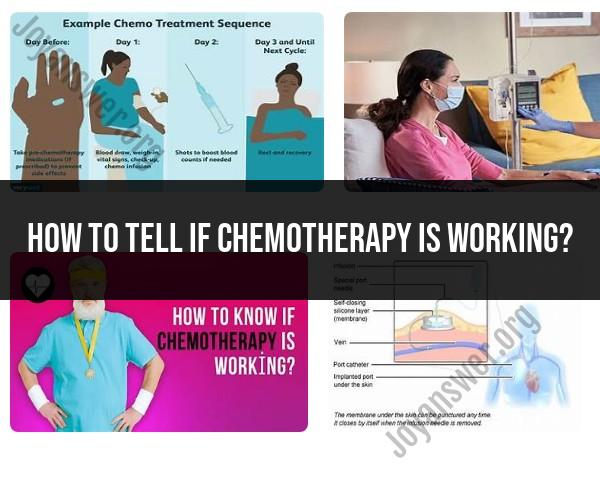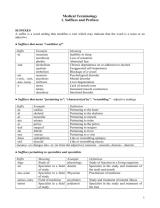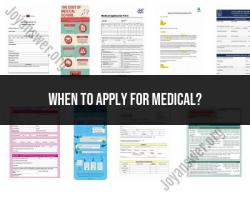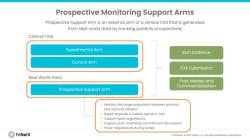How to tell if chemotherapy is working?
Assessing the effectiveness of chemotherapy involves a combination of clinical evaluations, imaging studies, laboratory tests, and communication between the patient and the healthcare team. The specific methods used to monitor chemotherapy effectiveness can vary based on the type of cancer being treated and individual patient circumstances. Here are some common approaches to assess chemotherapy effectiveness:
Clinical Evaluation:
- Oncologists regularly assess patients clinically by examining physical symptoms, such as changes in tumor size, pain levels, and overall well-being. Clinical evaluation helps determine how well a patient is responding to treatment.
Imaging Studies:
- Imaging techniques, such as CT scans, MRIs, PET scans, and X-rays, are commonly used to visualize the tumor and surrounding tissues. Changes in tumor size, shape, or metabolic activity seen on imaging can indicate the response to chemotherapy.
Blood Tests:
- Blood tests, including tumor markers and complete blood counts (CBC), are conducted to assess the impact of chemotherapy on cancer cells and overall blood cell counts. Tumor markers are specific substances produced by cancer cells, and changes in their levels may indicate treatment response.
Biopsy and Pathology:
- A biopsy involves taking a sample of tissue from the tumor site to examine it under a microscope. Pathology reports can provide insights into changes in the cancer cells, including response to treatment.
Response Evaluation Criteria:
- Oncologists use standardized criteria, such as the Response Evaluation Criteria In Solid Tumors (RECIST), to categorize the response to chemotherapy. Responses may include complete response (tumor disappearance), partial response (tumor shrinkage), stable disease (no significant change), or progressive disease (tumor growth).
Patient Symptoms and Quality of Life:
- Patients' experiences and symptoms are crucial indicators of treatment effectiveness. Improvements in symptoms, pain reduction, and enhancements in overall quality of life are considered positive outcomes.
Discussion with the Healthcare Team:
- Open communication between patients and their healthcare team is vital. Regular discussions about treatment progress, side effects, and any concerns allow for adjustments to the treatment plan and shared decision-making.
Follow-up Appointments:
- Follow-up appointments with the oncologist are scheduled at regular intervals to monitor treatment response and address any issues. Adjustments to the chemotherapy regimen may be made based on the assessments.
It's important to note that chemotherapy responses can vary among individuals, and the timeline for observing changes may differ. Some patients may experience rapid responses, while others may require more time. Additionally, healthcare professionals consider factors such as the cancer type, stage, and overall health of the patient when assessing treatment effectiveness.
Patients undergoing chemotherapy should actively participate in discussions with their healthcare team, report any new symptoms or concerns promptly, and attend follow-up appointments to ensure that the treatment plan is appropriately adjusted based on their response to chemotherapy.
Determining Chemotherapy Effectiveness: A Guide
Determining the effectiveness of chemotherapy is crucial for managing cancer treatment and making informed decisions. Here's how it's done:
1. Measuring Effectiveness:
There's no single way to gauge chemotherapy effectiveness. Doctors consider various factors:
- Tumor response: This is the primary indicator, measured through imaging tests like CT scans or MRIs. A positive response could be:
- Complete response: Cancer disappears entirely.
- Partial response: Tumor shrinks significantly.
- Stable disease: Tumor doesn't grow or shrink.
- Symptoms: Improvement in cancer-related symptoms like pain, fatigue, or difficulty breathing suggests positive response.
- Blood tests: Markers like tumor markers may decrease with successful treatment.
2. Signs and Symptoms of Positive Response:
While not definitive, these can suggest positive response:
- Reduced pain: Lessening of cancer-related pain can indicate tumor shrinkage.
- Improved energy levels: Increased energy and reduced fatigue can suggest positive impact.
- Better appetite and weight gain: Improved appetite and weight gain can signify reduced tumor burden.
- Improved sleep: Better sleep patterns may reflect reduced cancer-related stress and discomfort.
3. Medical Tests and Imaging:
These tests are crucial for accurate assessment:
- Imaging tests: CT scans, MRIs, PET scans, and ultrasound allow visualization of tumor size and changes.
- Blood tests: Complete blood count, tumor markers, and liver function tests assess overall health and treatment side effects.
- Tissue biopsy: In some cases, a biopsy may be repeated to assess tumor response at the cellular level.
4. Healthcare Monitoring:
Healthcare professionals monitor patients through:
- Regular appointments: Scheduled visits allow assessment of symptoms, side effects, and test results.
- Treatment adjustments: Based on monitoring, dosage or medications may be adjusted to optimize effectiveness.
- Communication and support: Open communication with patients is crucial for addressing concerns and managing expectations.
5. Patient Discussions and Evaluations:
Doctors discuss and evaluate:
- Treatment goals: Setting realistic goals helps both patients and healthcare professionals gauge progress.
- Side effects: Managing side effects and adjusting treatment accordingly.
- Emotional well-being: Providing ongoing support and addressing emotional challenges during treatment.
- Open communication: Encouraging patients to voice concerns and ask questions is key to informed decision-making.
Remember, chemotherapy effectiveness can vary based on cancer type, stage, and individual patient factors. Open communication with your healthcare team is crucial throughout the treatment journey. They can guide you through interpreting test results, understanding individual response, and making informed decisions about continuing or adapting treatment for optimal outcomes.













